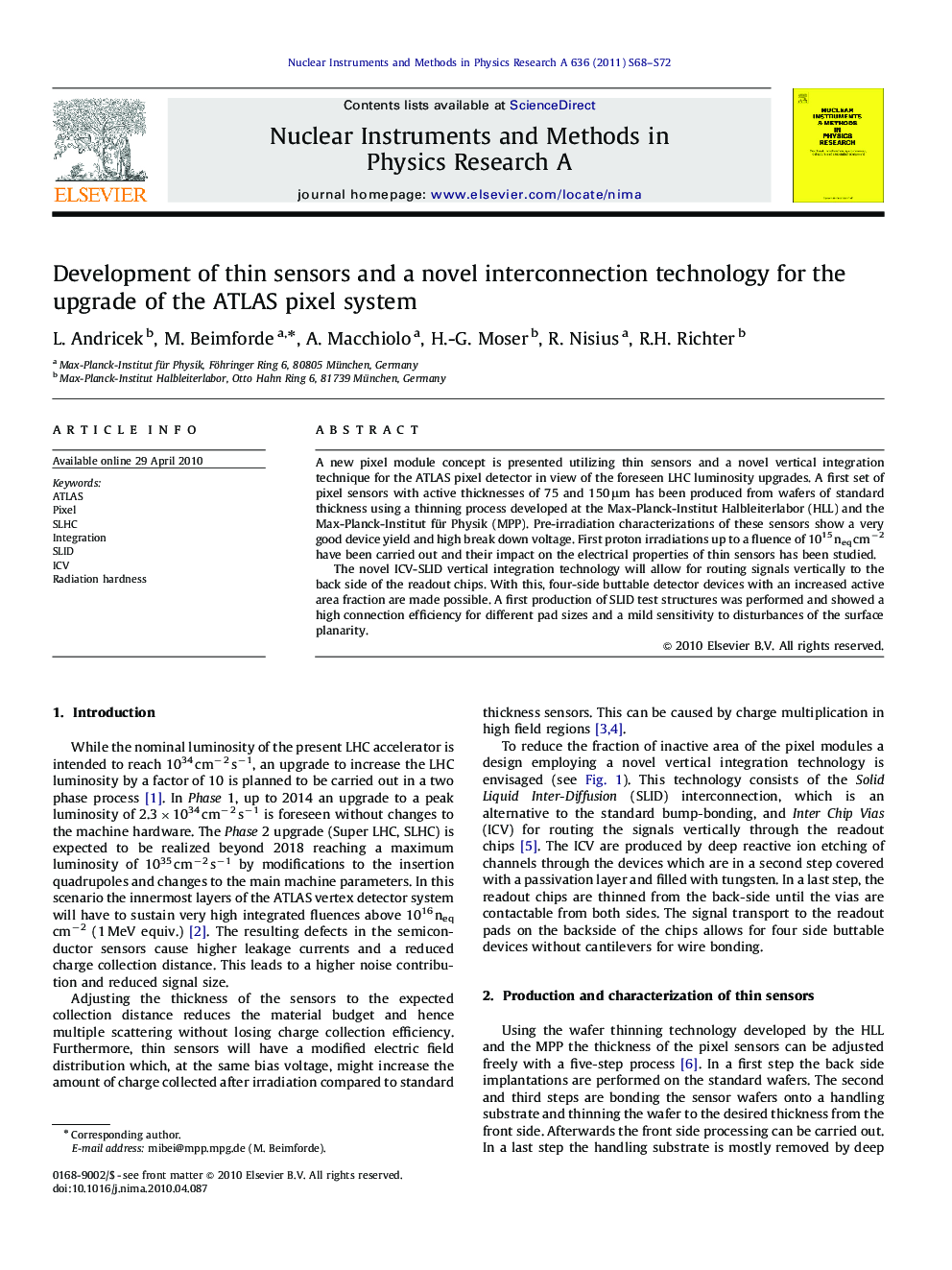| Article ID | Journal | Published Year | Pages | File Type |
|---|---|---|---|---|
| 1825187 | Nuclear Instruments and Methods in Physics Research Section A: Accelerators, Spectrometers, Detectors and Associated Equipment | 2011 | 5 Pages |
A new pixel module concept is presented utilizing thin sensors and a novel vertical integration technique for the ATLAS pixel detector in view of the foreseen LHC luminosity upgrades. A first set of pixel sensors with active thicknesses of 75 and 150μm has been produced from wafers of standard thickness using a thinning process developed at the Max-Planck-Institut Halbleiterlabor (HLL) and the Max-Planck-Institut für Physik (MPP). Pre-irradiation characterizations of these sensors show a very good device yield and high break down voltage. First proton irradiations up to a fluence of 1015 neq cm−2 have been carried out and their impact on the electrical properties of thin sensors has been studied.The novel ICV-SLID vertical integration technology will allow for routing signals vertically to the back side of the readout chips. With this, four-side buttable detector devices with an increased active area fraction are made possible. A first production of SLID test structures was performed and showed a high connection efficiency for different pad sizes and a mild sensitivity to disturbances of the surface planarity.
